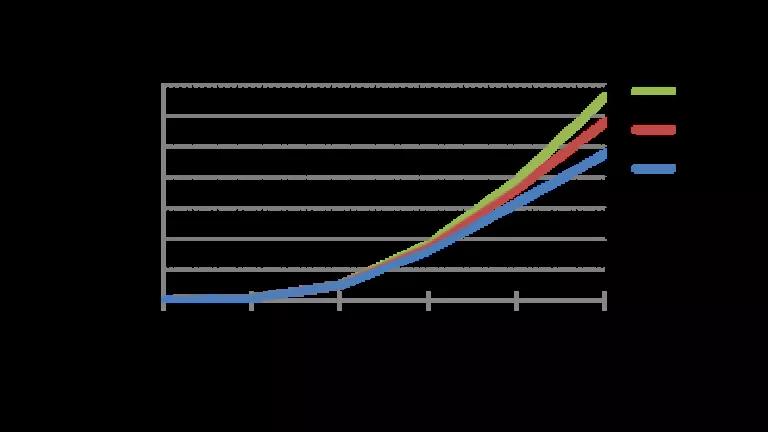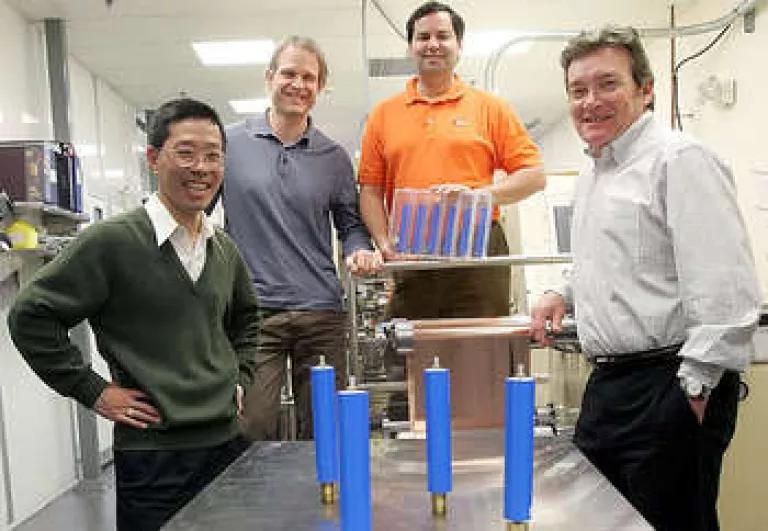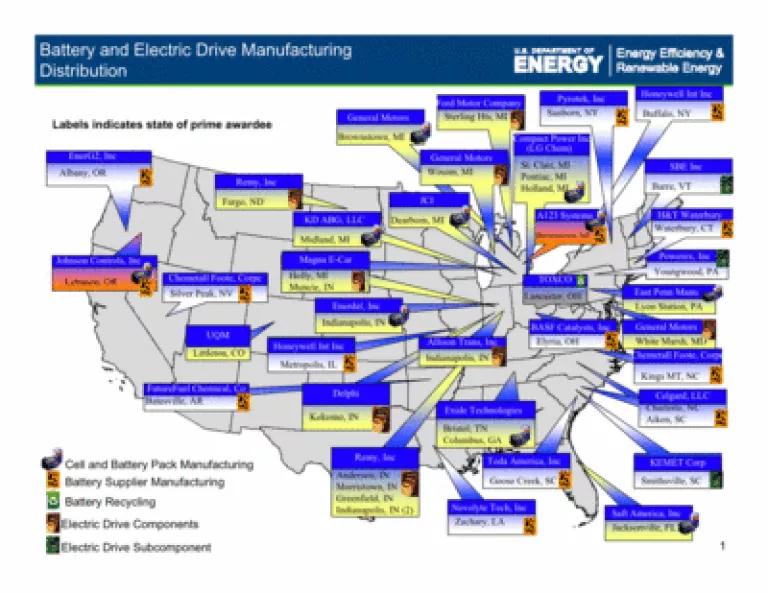
As I blogged about yesterday, winning the global electric vehicle race will require the U.S. to do what Asia and Europe are doing – and more. Today the White House followed up to the President's bold Clean Energy plan with details on spurring the plug-in electric vehicle (PEV) industry. I take a look at the plan and point out what it means for the EV industry and consumers.
1 million advanced technology vehicles on the road by 2015: We asked an automotive industry expert to evaluate auto industry plans, truth-test them, and develop a forecast for plug-in electric vehicle sales over the next five years. It turns out that nearly every major automakers and a number of startups will launch one or more plug-in electric vehicle model over the next five years. At last count, there were 45 plug-in electric vehicle models expected to be launched (32 from major automakers, 13 from start-up companies), with new product offerings announced almost monthly. Our expert analyzed the potential for each model, as described in our report. The chart below shows the number of PEVs on the road under low, medium, and high gas price scenarios ($2.25, $3, and $4 per gallon). The conclusion: The President’s goal is ultimately doable, particularly if the focus of his plan drives down battery costs, helps reduce consumer barriers to adoption, and ensures the U.S. becomes a major EV market.
.
Making electric vehicles more affordable with a rebate up to $7,500 instead of the existing tax credit: Existing policies for electric vehicles force customers to wait until tax time to get a credit for PEVs. The President’s modification would allow customers to receive rebates directly at the dealership, reducing the up-front costs for the vehicles at the point of sale. This change will also fix another important problem with the previous incentive: families with tax liabilities less than $7,500 don’t see much benefit from the tax credit, meaning more low-income and middle-income households will have access to PEVs..
Advancing innovative vehicle and battery technologies through increased R&D: The President focused on “winning the future” and has clearly made clean-tech R&D a priority. The President’s Budget “significantly broadens R&D investments in technologies like batteries and electric drives.” Battery companies like A123 Systems (Watertown, MA) got their start from these investments. For A123, it was a U.S. Department of Energy grant of $100,000 in 2001 when it was still a start-up out of MIT. While not all investments will be winners, there’s no doubt that targeted R&D investment can reap large rewards for the U.S. Today A123 has facilities in 10 countries, employs over 2,200, and has a market value of about $1 billion. In September last year, they opened the largest lithium ion automotive battery manufacturing plant in Livonia, Michigan with the assistance from the Recovery Act.

Image: A123 Systems, from invention to U.S. manufacturing in nine years.
Rewarding communities for leadership in reducing regulatory barriers and developing comprehensive electric vehicle-friendly infrastructure: Making sure the country is “plug-in” ready will be no small task. For example, there are over 3,000 traditional electric utilities in the U.S. with oversight by each state utility commission, making it challenging for a national market. In turn, each state and local government has its hands in electrical codes, standards, and permitting for installing charging infrastructure. Streamlining the customer process for EV and charging infrastructure deployment will require coordination and standardization. To this end, the President is proposing the Department of Energy initiate
“a competitive program to help communities across the country become early adopters of electric vehicles through regulatory streamlining, infrastructure investments, vehicle fleet conversions, deployment of EV incentives (e.g., parking, HOV access) partnerships with major employers/retailers, and workforce training.”
Translation: up to 30 communities will compete for grants of up to $10 million by demonstrating concrete reforms to streamlining and catalyzing EV deployment.
Building on Progress: The President rightfully cites the gains from the Recovery Act investments for this new industry. The U.S. is now on track to increase its battery manufacturing capacity from near zero to enough capacity to support 500,000 plug-in and hybrid vehicles (or 40% of the world’s advanced automotive batteries in 2015), with the expectation to halve battery costs by 2013. Consumers will ultimately benefit through lower cost vehicles, reduced oil use, together with domestic job creation. While there is little question that there is an early-adopter market for EVs in the near-term, the question remains whether we can "mainstream" the EV market and eventually be a major exporter of batteries, components, and EVs.

(Click on image for a full size image of Recovery Act investments in this industry)
Next Steps: One of the best ways to continue building an EV and battery industry in the U.S. is by ensuring we become a major market for clean vehicles. This means doing what Europe and Asia have already done – adopt aggressive fuel efficiency and carbon pollution standards for cars and truck fleets that will drive clean industry. As my colleague Roland Hwang points out, analysis conducted by the U.S. EPA, DOT, and California Air Resources Board shows that adopting standards equivalent to about 60 miles per gallon (or approximately 43 miles per gallon in real-world driving) results in significant deployment plug-in electric vehicles. Weaker standards, by contrast, result in virtually no production of plug-in electric vehicles. If we’re serious about having a mainstream market in the U.S. for EVs, we need to get serious about setting strong standards.
The President plan for electric vehicles is a bold one and should be commended. Together with strong fuel economy and carbon pollution standards for cars and trucks - equivalent to a 60 mpg standard - the U.S. will indeed be competitive in the global race for electric vehicle and battery manufacturing jobs.

